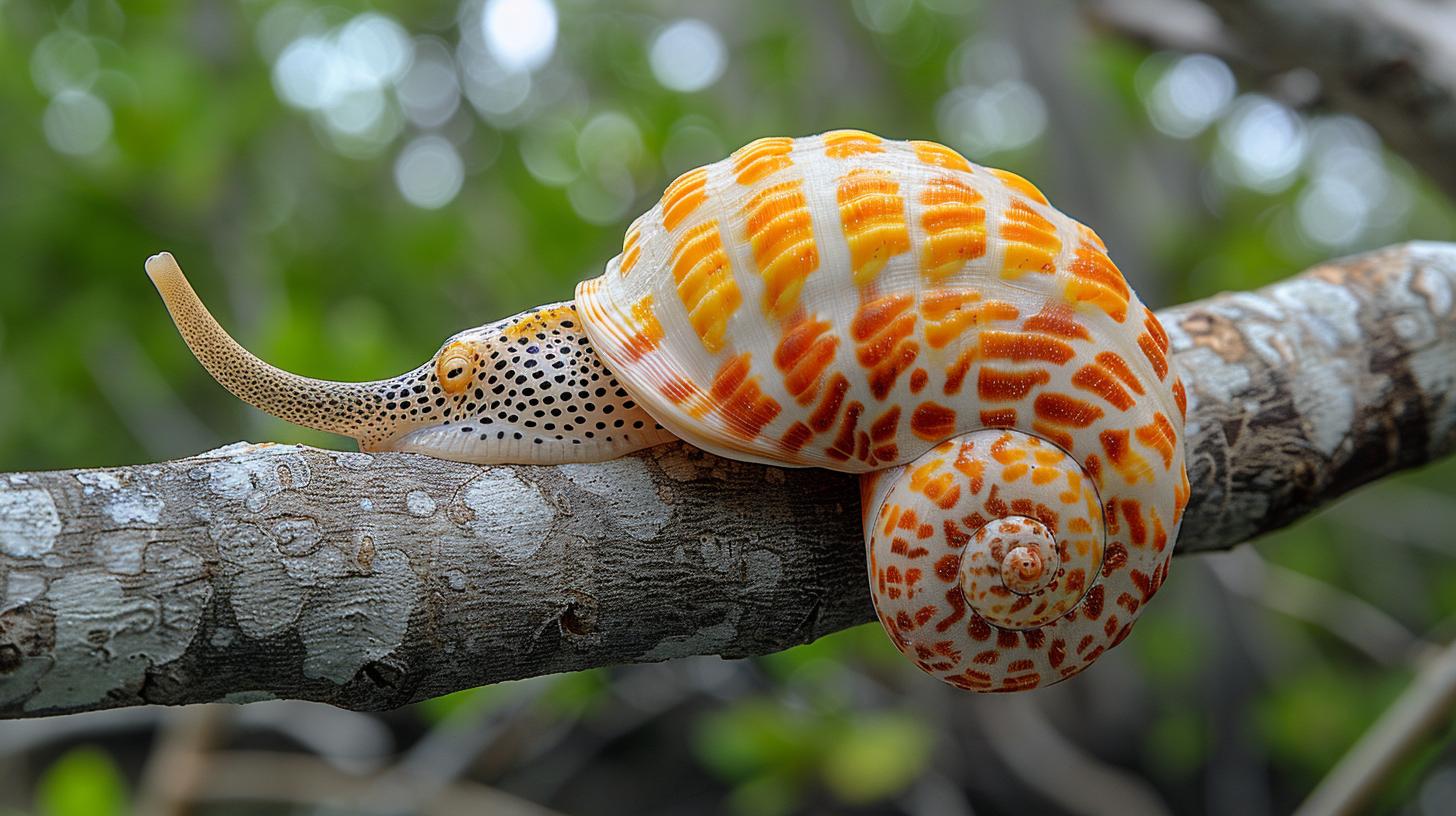3 Key Tips to Prevent Shell Rot in Turtles

Understanding Shell Rot
Discovering effective shell rot prevention tips is essential for turtle owners aiming to safeguard the health and longevity of their beloved reptilian pets. Shell rot, a formidable condition impacting turtles, occurs due to fungal or bacterial infections, causing damage to the shell. This initial section sets the stage to delve into what shell rot entails, its potential impact on turtles, and underscores why proactive prevention is crucial for these creatures' well-being.
Shell rot can manifest through various symptoms such as soft spots, discoloration, or an unpleasant odor emanating from the shell. Its common causes range from poor habitat conditions-like excessive humidity or unsanitary living spaces-to physical injuries that breach the shell's protective layer. Understanding these factors is paramount for owners who wish to keep their turtles healthy and thriving. Identifying early signs of distress and mitigating risks form the foundation of preventing this debilitating condition.
Keeping in mind that an ounce of prevention is worth a pound of cure, realizing the significance of establishing a clean and stress-free environment for your turtle cannot be overstated. A habitat that closely mirrors their natural ecosystem not only minimizes stress but also significantly reduces the likelihood of shell rot by fostering robust immune responses in these reptiles.
As we proceed, guidance on how to create such an environment will be provided, emphasizing that a healthy habitat is not just about cleanliness but also involves controlling humidity levels and ensuring proper water filtration to prevent harmful pathogens from flourishing.
The Importance of a Healthy Habitat
Maintaining a healthy habitat is fundamental in the prevention of shell rot in turtles, acting as the first line of defense against this common yet preventable condition. A suitable environment mirrors the natural ecosystem from which turtles hail, offering not just comfort but also the right conditions to thrive and stay healthy.
This emphasis on creating an amicable living space is more than just about aesthetics; it's about replicating the ecological dynamics that play a crucial role in their physical well-being. For instance, proper humidity levels are not only necessary for respiratory health but also prevent the shell from becoming too dry or too damp-conditions that could lead to shell degradation and rot.
The substrate used in your turtle's habitat can be a critical factor in shell rot prevention tips, with some materials harboring bacteria or retaining excess moisture. Choosing the right substrate-aquatic substrates for water turtles and dry, absorbent materials for land species-and changing it regularly eliminates harmful bacteria that could potentially cause shell rot.
Additionally, maintaining an appropriate temperature gradient within the habitat encourages natural behavior patterns like basking, which is essential for shell health and overall physiology. Basking under UVB lighting helps turtles synthesize vitamin D3, vital for calcium absorption and strong shell formation.
Moreover, cleanliness cannot be overstated when discussing a healthy habitat. Regular cleaning schedules to remove waste products, uneaten food, and other debris significantly reduce the risk of bacterial and fungal infections leading to shell rot. This entails not only daily spot checks but also periodic comprehensive cleaning procedures to ensure all elements of the habitat-from water filters to decorative items-are free from potential contaminants.
| Prevention Strategy | Key Benefits |
|---|---|
| Maintain Appropriate Humidity | Prevents overly dry or damp conditions detrimental to shell health. |
| Choose Suitable Substrate | Reduces harmful bacteria growth; supports natural behavior. |
| Regular Habitat Cleaning | Limits bacterial/fungal infection risks; promotes general well-being. |
Creating and maintaining a healthy habitat reflects a commitment to your turtle's well-being and plays an indispensable role in preventing ailments such as shell rot. By carefully selecting suitable substrates, regulating environmental conditions like humidity and temperature, ensuring access to UVB light for Vitamin D synthesis, and adhering to rigorous cleanliness protocols, you provide your turtle with a solid foundation for long-term health.
The effort invested in crafting these ideal living conditions dovetails into broader shell rot prevention tips, ensuring that turtles not only survive in captivity but truly flourish.
Proper Nutrition
Nutrition plays a pivotal role in the overall health of turtles, and by extension, their shell condition. A balanced diet rich in essential vitamins and minerals is non-negotiable when it comes to preventing shell-related issues like rot.
Improper nutrition can lead to a weak shell structure, making a turtle more susceptible to infections and diseases. Understanding the nutritional needs of your specific turtle species is paramount since dietary requirements may vary significantly from one species to another.
One common mistake many turtle owners make is providing an overly simplistic or monotonous diet that lacks in crucial nutrients. Such feeding practices can lead to nutritional imbalances or deficiencies that compromise shell integrity and general health. To foster strong shells and ward off potential health issues like shell rot, incorporating a diversity of foods that mimic natural dietary conditions as closely as possible is essential.
Vital Nutrients for Strong Shells
At the forefront of nutrients vital for shell health are calcium and vitamin D3. Calcium is fundamental for building strong bone and shell structures, while vitamin D3 assists in calcium absorption-a synergistic relationship that cannot be overlooked. Fresh leafy greens, aquatic plants, and commercial turtle foods fortified with these nutrients can offer a sound base for your turtle's diet. However, relying solely on supplements isn't ideal; striving for a diet that naturally includes these elements is preferable.
Another critical component of a turtle-friendly diet is protein. Depending on the species, the amount of animal-based protein required will vary but including it ensures proper growth and maintenance of all bodily functions, including shell development. Offering live prey items such as worms or feeder fish not only provides necessary proteins but also emulates predatory behaviors seen in the wild, contributing to psychological well-being.

Avoiding Nutritional Pitfalls
While understanding what turtles require nutritionally is fundamental, recognizing common pitfalls in their diets is equally important for shell rot prevention tips Over-reliance on high-fat foods or those lacking in essential nutrients can quickly result in obesity or malnutrition-both of which stress your pet's system and may increase susceptibility to diseases like shell rot.
It's advisable to steer clear from too much reliance on processed foods which might not meet all dietary needs when used exclusively.
In summation, ensuring your turtle receives a balanced diet tailored to its specific species needs stands as a cornerstone strategy in preventing shell rot Introducing variety into their meals not only keeps them healthy but enriches their lives by promoting natural behaviors through diverse feeding practices.
By prioritizing proper nutrition along with clean habitat conditions and regular health screenings, you lay down the foundation for your reptilian friend's long-lived health and vitality free from ailments such as shell rot.
Regular Health Checks and Early Detection
Turtle owners understand that their shelled friends require more than just food and water to thrive. Regular health checks are an integral component of a comprehensive care plan, serving not only as a means to reinforce the bond between owner and pet but also as a crucial preventive measure against conditions like shell rot.
These routine examinations allow for early detection of potential health issues, making it significantly easier to address problems before they escalate. Among these, shell rot stands out as a condition where early identification can make a significant difference in outcomes.
Understanding the signs of shell rot is essential for effective early detection. Symptoms such as soft spots on the shell, discoloration, and an unpleasant smell can all indicate the onset of this condition. By familiarizing themselves with these indicators, turtle owners are better positioned to seek timely intervention, thereby preventing further deterioration. This segment will explore how integrating regular health assessments into your care routine can be your best defense against shell rot.
Setting Up a Regular Check-Up Schedule
Establishing a consistent schedule for health checks is paramount in monitoring the wellbeing of your turtle. Ideally, thorough examinations should be conducted monthly, with more cursory inspections taking place weekly. This frequency ensures that any changes in the turtle's shell condition or overall health are promptly noted and addressed. These check-ups should assess everything from eating habits and activity levels to scrutinizing the shell for any irregularities that could signify shell rot or other ailments.
Key Indicators to Watch for During Examinations
When conducting health checks for shell rot prevention tips, several key indicators warrant close attention. Firstly, examine the texture and integrity of the shell closely; signs of flaking or softening can precede visible shell rot lesions.
Pay special attention to areas where dirt or waste might accumulate, as these can become breeding grounds for bacteria and fungi responsible for shell degradation. Additionally, observe your turtle's behavior-lethargy or reluctance to eat may suggest discomfort potentially related to developing health issues.
Through diligent observation and prompt action based on findings from regular health exams, turtle owners can tremendously impact their pets' overall health and longevity. Early detection facilitated by consistent health checks plays a vital role in preventing not only shell rot but also various other conditions that could compromise your turtle's quality of life. By prioritizing these practices within your care routine, you align closely with expert recommendations aimed at securing a thriving existence for your reptile companion.
Shell Rot Prevention Tips
Maintaining the health and longevity of pet turtles requires vigilant care and attention to their living conditions, diet, and overall well-being. At the heart of this nurturing process lies the imperative to prevent shell rot, a condition that can significantly compromise a turtle's quality of life. Engaging in proactive measures is essential for keeping these fascinating reptiles thriving under your care.
Among the most pivotal strategies are specific shell rot prevention tips that every turtle owner should integrate into their routine care practices. These recommendations are not just about averting disease but also about enriching your pet's environment in ways that promote robust health.
A clean and well-structured habitat plays a crucial role in preventing shell rot, highlighting the importance of regular maintenance and observation. Ensuring your turtle's living space mimics natural conditions as closely as possible helps minimize stress-a significant factor in vulnerability to illnesses like shell rot.
Variables such as proper filtration, adequate water changes, and controlling humidity levels within an enclosure are foundational aspects. Yet, beyond environmental cleanliness lies the realm of nutritional care; providing a balanced diet rich in calcium and vitamin D3 supports shell strength and resilience against potential infections.
Beyond these practical measures, understanding when to implement certain interventions can mark the difference between prevention and treatment. Regular health checks facilitate early detection of abnormalities in shell texture or color that might indicate emerging issues with shell rot. Equally, educating oneself about safe handling practices minimizes physical harm to the shell's integrity.
These actions, combined with an informed approach to UVB lighting usage-critical for metabolic processes related to shell development-constitute comprehensive shell rot prevention tips By embracing these guidelines diligently, turtle owners can significantly mitigate the risk of this condition affecting their cherished companions.

When to Seek Veterinary Care
Identifying the right moment to seek veterinary care is a critical aspect of preventing and managing shell rot in turtles. While *shell rot prevention tips* are instrumental in reducing the risk, recognizing when professional intervention is necessary can be the difference between a speedy recovery and prolonged illness. Turtle owners should be vigilant for signs that indicate a worsening condition or failure of home preventative measures to curb the onset of shell rot.
One clear indicator that it's time to visit a veterinarian is when visible damage or changes in the turtle's shell persist despite efforts to maintain optimal living conditions and nutrition. Symptoms such as soft spots, discoloration, foul odor, or discharge are red flags.
Additionally, behavioral changes in your turtle, like lethargy, decreased appetite, or reluctance to swim, can also signify underlying health issues necessitating immediate attention. These symptoms may not only suggest shell rot but also other health complications that could jeopardize your turtle's well-being.
For proactive caretakers seeking to employ shell rot prevention tips, incorporating regular health checks by a qualified reptile veterinarian into their care routine is highly recommended. Such checks can help identify potential issues before they escalate into serious problems. A vet specializing in reptiles will offer invaluable advice tailored specifically to your turtle's needs and may recommend preventive treatments such as dietary adjustments or supplements to bolster shell strength.
- Schedule annual check-ups with a reptile specialist.
- Monitor your turtle daily for any signs of physical or behavioral changes.
- Seek immediate veterinary assistance if you notice symptoms of shell degradation or if your turtle exhibits unusual behavior.
Recognizing the importance of these actions reinforces not just the commitment to preventing diseases like shell rot but ensures a happier, healthier life for these remarkable pets. Establishing a relationship with a veterinarian familiar with turtles also means having an expert resource at hand for advice on habitat maintenance, nutrition adjustment, and other shell rot prevention tips specific to your pet's needs.
Engaging with professionals and applying preventative strategies forms a comprehensive approach towards keeping shell rot at bay while promoting overall wellness for your turtle.
Supporting Your Turtle's Recovery From Shell Rot
As we conclude our journey through understanding and preventing shell rot in turtles, it's clear that the health of these charming reptiles depends heavily on our actions and commitment as caregivers. The emphasis on maintaining a clean living space cannot be understated-it serves as the foundation upon which a healthy turtle life is built. Coupled with the right nutrition that fuels strength and vitality, our shelled friends stand a better chance against the perils of shell rot.
Indeed, prevention goes beyond mere maintenance; it requires an attentive eye for changes in behavior or appearance that might signal distress or disease. Early detection paired with swift action can make all the difference in preventing minor issues from becoming major concerns.
Moreover, integrating shell rot prevention tips into your routine care can establish a strong defense against this condition. These measures include creating an environment that mirrors natural habitats to reduce stress levels and prioritizing a diet filled with essential nutrients to promote robust shell health.
This holistic approach ensures your turtle not only survives but thrives under your care. It highlights an unwavering dedication to their wellbeing, showcasing the profound impact responsible pet ownership has on preserving the delicate balance of life within our homes.
We invite you to continue enriching your knowledge about the fascinating world of turtles and other reptilian companions by exploring more articles on our website. Whether you're searching for advanced care strategies, intriguing facts, or seeking support through a community of like-minded enthusiasts, we're here to guide you every step of the way.
Let your curiosity lead you to discover new insights and hidden gems within our extensive content library-your next adventure in pet care excellence awaits.
Frequently Asked Questions
How Do You Prevent Shell Rot?
Preventing shell rot involves a combination of maintaining clean living conditions, ensuring the pet's environment is properly set up with suitable lighting and temperature, and offering a balanced diet. Regular tank cleanings and water quality checks are essential. Avoid rough or sharp objects in the habitat that might cause shell injuries.
What Is the Best Medicine for Shell Rot?
The choice of medicine for treating shell rot must be based on veterinary advice, as it typically requires an antibiotic to treat any bacterial infection effectively. Topical treatments with prescription antibiotics or antifungal medications are common, depending on the underlying cause of the shell rot.
Can You Put Neosporin on Shell Rot?
Applying Neosporin to shell rot is not recommended without first consulting a veterinarian. While Neosporin can help prevent bacterial infections in minor cuts and scrapes, its use on shell rot might mask symptoms rather than cure the underlying issue, potentially delaying proper treatment.
How Can I Improve My Turtle Shell Health?
Improving turtle shell health includes several steps: providing a nutritious diet rich in vitamins and minerals important for shell development, ensuring exposure to adequate UVB lighting which helps them synthesize vitamin D3 necessary for calcium metabolism, and keeping their aquatic or terrestrial environments clean to prevent infections.
Can You Use Hydrogen Peroxide for Shell Rot?
Using hydrogen peroxide for treating shell rot is generally discouraged because it can damage healthy tissue surrounding the infected areas and delay healing. A more targeted approach using products specifically designed for reptile health prescribed by a veterinarian is preferable.
Can I Put Coconut Oil on My Turtles Shell?
Coconut oil application on a turtle's shell can occasionally be beneficial due to its moisturizing properties; however, it's not a cure-all solution for serious conditions like shell rot. Small amounts used sparingly may help keep shells looking healthy but always consult a veterinarian before trying new treatments on your turtle to avoid inadvertently causing harm.
Leave a Reply
You must be logged in to post a comment.